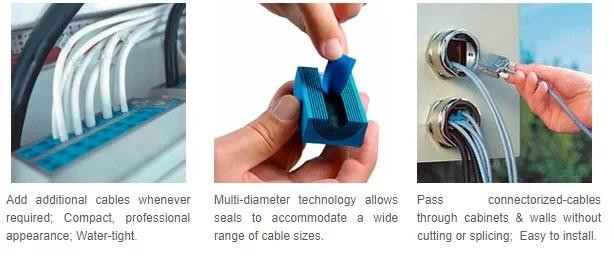Offshore Wind Farms—Understanding and Improving Efficiency
Offshore wind farms use incredibly promising technology that can help communities overcome the environmental impact of fossil fuels. However, we need to understand the basics of wind farming efficiency and develop new technologies to overcome the problems holding back this renewable energy source.
Improving the efficiency of an offshore wind farm comes down to addressing some basic issues.
The Need For Offshore Wind Turbines
The demand for offshore wind turbines is increasing. As the factors driving this demand only increase, the need for improved efficiency is going to become more urgent.

Coastal Energy Needs
In the United States, the United Kingdom, and Europe, huge concentrations of the population live in coastal communities. Coastal areas get some of the best results when it comes to wind farming, but these systems do face the unique challenges of having to be built in extremely wet environments.
One of the most basic challenges to fulfilling coastal energy needs is ensuring that cable transits are weather sealed from the turbine, to the cables leading back to the shore.
Sustainable Electricity Solutions
Offshore wind farming presents a sustainable option for generating electricity. These wind turbines do not burn fossil fuels and the technologies needed to build them are relatively simple.
Simplicity can be deceiving when it comes to efficiency. we're at the point in sustainable wind farming where mastering the basics can represent some of the biggest gains and losses when it comes to total energy output.
If you routinely have to service your wind farm due to moisture and weather damage, you're going to see a much bigger drop in efficiency than you might expect.
Overcoming Obstacles To Offshore Wind Farming
Overcoming these obstacles to offshore wind farming efficiency starts with ensuring that all of the basics are taken care of.
Let's look at one of the most important aspects of your offshore wind farm—ensuring that your table transits are watertight.
Building Watertight Turbines
Your offshore wind turbines are full of cable transits. cables, tubing, and pipes run throughout the wind turbine, its support structure, and back to the shore so the power can be utilized by the local community.
Each of these cable transits represents a potential point for water incursion into your system. The risk gets even higher in offshore systems where severe weather conditions can dramatically increase the likelihood of water damage.
Watertight cable glands allow you to seal these systems with a much greater level of efficiency. Companies like Roxtec are building cable transits that can withstand these conditions and have been tested on a large scale.
Watertight cabling in offshore wind farming has been successfully implemented by Roxtec in high-demand systems like the London Array and the Greater Giabbard wind farm.
Cable transit systems like those made by Roxtec help prevent the incursion of water, particulate matter, and even wildlife or pests. These are the ideal cable transit systems whether you're building an offshore wind farm or you are upgrading energy collection and distribution back home.
Source URL :- https://toppostng.com/offshore-wind-farms-understanding-and-improving-efficiency/

Comments
Post a Comment